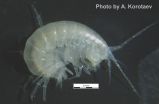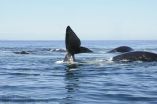Electricity generating nano-wizards
Quantum dots are an ideal nanolab to study the means to turning heat into electricity
2015-05-18
(Press-News.org) Just as alchemists always dreamed of turning common metal into gold, their 19th century physicist counterparts dreamed of efficiently turning heat into electricity, a field called thermoelectrics. Such scientists had long known that in conducting materials the flow of energy in the form of heat is accompanied by a flow of electrons. What they did not know at the time is that it takes nanometric-scale systems for the flow of charge and heat to reach a level of efficiency that cannot be achieved with larger scale systems. Now, in a paper published in EPJ B Barbara Szukiewicz and Karol Wysoki?ski from Marie Curie-Sk?odowska University, in Lublin, Poland have demonstrated the importance of thermoelectric effects, which are not easily modelled, in nanostructures.
Since the 1990s, scientists have looked into developing efficient energy generation from nanostructures such as quantum dots. Their advantage: they display a greater energy conversion efficiency leading to the emergence of nanoscale thermoelectrics. The authors evaluate the thermoelectric performance of models made of two quantum dots - which are coupled electrostatically - connected to two electrodes kept at a different temperature and a single quantum dot with two levels. First, they using the theoretical approach based on approximations to calculate the so-called thermoelectric figure of merit, expected to be high for systems with high energy conversion efficiency. Then, they calculated the charge and heat fluxes as a means to define the efficiency of the system.
They found that the outcomes of the direct calculations giving the actual - as opposed to theoretical - performance of the system were less optimistic. For most parameters with an excellent performance, calculated predictions turned out to be surprisingly poor. These findings reveal that effects that are not easily formalised using equations are important at the nanoscale. This, in turn, calls for new ways to optimise the structures before they can be used for nanoscale energy harvesting.
INFORMATION:
Reference:
B. Szukiewicz and K. Wysoki?ski (2015), Quantum dot as spin current generator and energy harvester, Eur. Phys. J. B 88: 112, DOI: 10.1140/epjb/e2015-60156-8
ELSE PRESS RELEASES FROM THIS DATE:
2015-05-18
The grounding of a giant iceberg in Antarctica has provided a unique real-life experiment that has revealed the vulnerability of marine ecosystems to sudden changes in sea-ice cover.
UNSW Australia scientists have found that within just three years of the iceberg becoming stuck in Commonwealth Bay - an event which dramatically increased sea-ice cover in the bay - almost all of the seaweed on the sea floor had decomposed, or become discoloured or bleached due to lack of light.
"Understanding the ecological effect of changes in sea-ice is vital for understanding the future ...
2015-05-18
Scientists are attempting to mimic the memory and learning functions of neurons found in the human brain. To do so, they investigated the electronic equivalent of the synapse, the bridge, making it possible for neurons to communicate with each other. Specifically, they rely on an electronic circuit simulating neural networks using memory resistors. Such devices, dubbed memristor, are well-suited to the task because they display a resistance, which depends on their past states, thus producing a kind of electronic memory. Hui Zhao from Beijing University of Posts and Telecommunications, ...
2015-05-18
An international team of scientists have discovered a new species of typhlogammarid amphipod in the limestone karstic caves of Chjalta mountain range -- the southern foothills of the Greater Caucasus Range. The study was published in the open access journal Subterranean Biology.
The new amphipod, which belongs to the genus Zenkevitchia, is the second species known from this group. This new addition to the genus is named Zenkevitchia yakovi after the famous Russian biospeleologist Prof Yakov Birstein.
Typhlogammarid amphipods are a group blind and unpigmented endemic ...
2015-05-18
Radiotherapy used in cancer treatment is a promising treatment method, albeit rather indiscriminate. Indeed, it affects neighbouring healthy tissues and tumours alike. Researchers have thus been exploring the possibilities of using various radio-sensitizers; these nanoscale entities focus the destructive effects of radiotherapy more specifically on tumour cells. In a study published in EPJ D, physicists have now shown that the production of low-energy electrons by radio-sensitizers made of carbon nanostructures hinges on a key physical mechanism referred to as plasmons ...
2015-05-18
This news release is available in German.
Scientists from Paris and Helmholtz-Zentrum Berlin have been able to switch ferromagnetic domains on and off with low voltage in a structure made of two different ferroic materials. The switching works slightly above room temperature. Their results, which are published online in Scientific Reports, might inspire future applications in low-power spintronics, for instance for fast and efficient data storage.
Information can be written as a sequence of bit digits, i.e. "0" and "1". Materials which display ferromagnetism ...
2015-05-18
Bowel cancer is often driven by mutations in one of several different genes, and a patient can have a cancer with a different genetic make-up to another patient's cancer. Identifying the molecular alterations involved in each patient's cancer enables doctors to choose drugs that best target specific alterations.
However, it is also becoming clear that while some cancers may be driven by a single gene mutation, individual tumours are often composed of groups of cancer cells, with each group having different molecular alterations from the others. This is known as intra-tumour ...
2015-05-18
Streptococcus pneumoniae is a major human pathogen and is known to be associated with increased risk of fatal heart complications including heart failure and heart attacks.
As Streptococcus pneumoniae is a respiratory pathogen that does not infect the heart, however, this association with heart problems has puzzled clinicians and researchers, particularly as even prompt use of antibiotics does not provide any protection from cardiac complications.
A multidisciplinary research team, led by Professor Aras Kadioglu and Professor Cheng-Hock Toh at the University of Liverpool, ...
2015-05-18
WASHINGTON, D.C., May 18, 2015 -- Human beings have unique voices -- from the deep, resonating bass of James Earl Jones to the raspy melodies sung by Broadway star Carol Channing -- and we routinely recognize individuals based solely on the way they sound, for example over the telephone, on a music CD or in an animated film.
The same theory that explains individual differences in human speech has recently been applied to other members of the animal kingdom, including dogs and deer. Now researchers from Syracuse University in New York are working to understand whether ...
2015-05-18
Predatory seals are constraining the recovery of cod stocks in Scottish West coast waters, research led at the University of Strathclyde suggests.
Losses of cod, through fishing and natural causes, have remained high for many years and have caused long-term decline in the stock - in some years, fishing removed around 50% of the total weight of the stock. The study found that, although fishing has now halved, predation by seals has rapidly increased to compensate, eating up more than 40% of the total stock.
Seals have, historically, been anecdotally blamed for the reduction ...
2015-05-18
Stanford computer scientists have shown how crowdfunding websites can use data science to boost cash value of donations. Their research confirms, among other findings, the importance of a timely thank you.
It's common courtesy to say thanks when receiving a gift, and common sense to think that givers might be generous again if they felt good about their prior gift.
Now Stanford computer scientists have shown how crowdfunding websites like Kickstarter and DonorsChoose.org can use data science to apply these folk wisdoms systematically, and on a large scale, to greatly ...
LAST 30 PRESS RELEASES:
[Press-News.org] Electricity generating nano-wizards
Quantum dots are an ideal nanolab to study the means to turning heat into electricity



